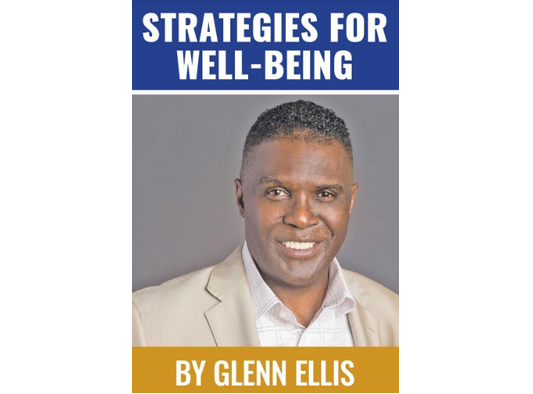By Glenn Ellis
As we watch the frantic efforts to control the spread of the killer coronavirus that’s sweeping the world, I couldn’t help but wonder what would happen if we were to be hit, hard, by the virus here in the United States.
Is there is a possibility we would see it follow the same pattern of racial health disparities as we do in other health conditions and diseases? With the United States as we all know, African Americans are affected disproportionately by every disease and health condition (I’m sure there’s no need to elaborate).
Even though we all would like to think of racial segregation as something that is in the past because it was legally outlawed in the U.S. by the Civil Rights Act of 1964, it continues today. African Americans and Latino people are more likely to live among their own racial group than they are among whites.
Even though I knew that what I found would be depressing, I had to look at the statistics from the National Institute of Allergy and Infectious Diseases (NIAID), just to see what the current data said about how “we” fared, as it relates to infectious diseases, in general, in this country.
According to NIAID, “African Americans account for about 13 percent of the U.S. population, yet represent almost half of new AIDS diagnoses; 21 percent of reported tuberculosis (TB) in U.S. born individuals; 55.4 percent of reported gonorrhea cases, 38.1 percent of reported syphilis cases, and five to seven times the rate among white men and women of reported chlamydia cases; among the highest rates of chronic Hepatitis C and Hepatitis C-related deaths compared to other ethnic groups.”
Just as I thought.
While Pharma — pharmaceutical companies collectively as a sector of industry — governments, private donors and the medical community have focused attention on surveilling and controlling diseases of poverty in the developing world, what often gets lost in that conversation is that the neglected diseases can strike people in any nation where the gap between rich and poor is wide and growing. So, if you’re like me; poor, black, or in an urban area in this country, you need to pay attention to the coronavirus.
It is estimated that upwards of 12 million Americans have a disease linked to extreme poverty.
Already, we have a group of chronic and disabling conditions – the “neglected diseases of poverty”- afflict hundreds of thousands of people in the United States. These diseases exist almost exclusively among the poor and communities of color (particularly women and children), and are a major contributor to the vast social and health disparities. They have a devastating impact on childhood development, maternal and child health, and worker productivity, and most concerning, trapping individuals and communities in a continuous cycle of sickness and poverty.
Poverty and disease are stuck in an ongoing, vicious relationship. One goes a long way towards intensifying the other with studies demonstrating that infection rates of certain diseases are highest in regions where poverty is rife.
What does this all mean? Poverty is instrumental in cultivating conditions that allow disease to spread. In turn, infectious diseases exacerbate certain factors that contribute to poverty. In many parts of the world, healthcare is not free nor is it cheap, placing huge financial stress on families who may already live under the poverty line.
We already know, all too well, that social determinants of health, including wealth, followed by good access to medical and healthcare, can tell you everything you need to know to predict health outcomes.
Millions of Americans may be living with a disease linked to extreme poverty, of which hookworm — intestinal, blood-feeding, parasitic roundworms that cause types of infection — is just one. Those affected are more likely to be people of color – African American, Latino or Native American ― who live in communities too often ignored by the rest of the nation. They may lack proper sanitation; they could also be exposed to disease-carrying pests or have inadequate health care.
Although neglected tropical diseases are not as common in the United States as HIV/AIDS or asthma, the New York Times has called neglected tropical diseases the “new plague of poverty” because of its’ disproportionate effect on people already living in poverty, who often lack access to health care and basic infrastructure.
One of the underreported issues in this problem is that much of the data on the prevalence or incidence of infectious disease in poor communities never leaves the emergency room, hospital, or the doctor’s office. Since 1961, the U.S. Centers for Disease Control and Prevention collects and publishes data about such diseases from all over the country. While states voluntarily report such data to the federal government, each state has its own laws requiring the medical community to share information when it encounters certain diseases.
While a study in the Journal of the American Medical Association (JAMA) showed that, for the first time since 1980, fewer Americans are dying from infectious disease but not for everyone; the outcome gap for blacks and the poor has increased.
I will continue my mission work of “shining a light” and bringing attention to the fact that there are people who are supposedly members of an equal society, who suffer needlessly and die sooner and quicker than others in the same society. Sadly, one thing the evidence has shown us about health disparities: If all of the people impacted were wealthy, the powers that be would have found a solution a long time ago.
Glenn Ellis, is Research Bioethics Fellow at Harvard Medical School and author of Which Doctor?, and Information is the Best Medicine. For more good health information visit: www.glennellis.com.




